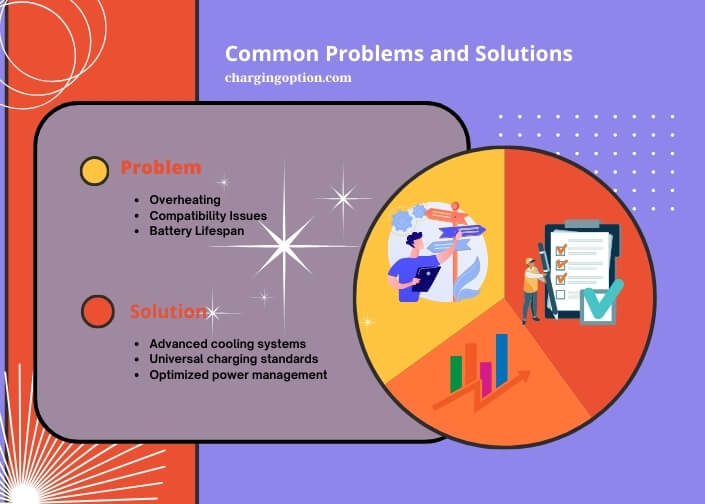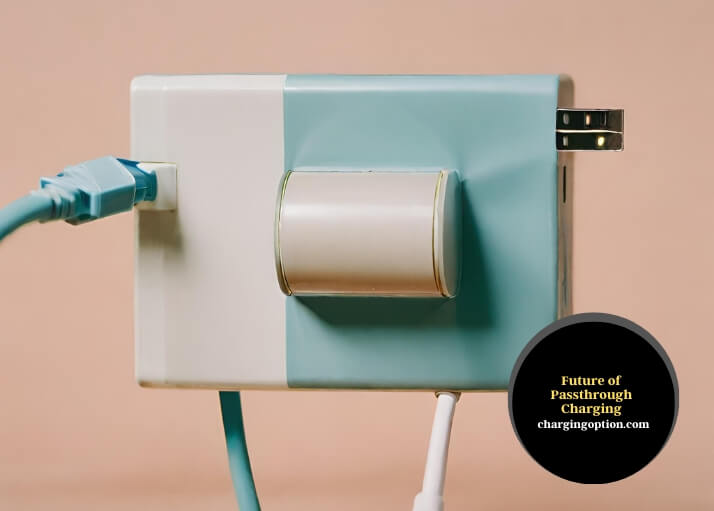Published on: March 31, 2024
Written by Imtiaj Belal / Fact-checked by Rizbi Neyaj
Passthrough charging is a technology that allows a device to charge another device while it itself is being charged. This feature is particularly useful for devices like power banks, laptops, and smartphones, enabling them to provide power to another device without interrupting their own charging process.

Passthrough charging represents a significant advancement in the way we manage our electronic devices, offering a more efficient and convenient way to keep them powered. This technology is especially beneficial for users who rely on multiple gadgets throughout their day, as it minimizes the number of chargers needed and allows for continuous device usage.
By enabling one device to charge another, passthrough charging simplifies the charging setup, reducing clutter and the need for multiple power outlets. It also plays a crucial role in situations where power sources are limited, such as during travel or in areas with restricted access to electricity.
This charging method aligns with the growing trend towards more sustainable and energy-efficient technology solutions. As the demand for electronic devices continues to rise, passthrough charging offers a practical solution to power management challenges, ensuring that devices remain operational and fully charged, ready to meet the needs of the modern, connected world.
Passthrough Charging Demystified
Passthrough charging stands as a modern marvel in the realm of electronic devices, offering a seamless way to charge a device while it is being used or is passing power to another device. Unlike traditional charging methods that require a device to be solely dedicated to charging, passthrough charging enables a device to both receive and supply power simultaneously.
This capability is particularly beneficial for gadgets like laptops, power banks, and smartphones, which can now serve as conduits for charging other devices without interrupting their own power supply.
The technical backbone of passthrough charging involves sophisticated circuitry that manages power flow to ensure devices are charged efficiently without overloading the system.
This method contrasts with conventional charging, where power flow is unidirectional, from the power source to the device. The innovation of passthrough charging lies in its ability to prioritize device operation, ensuring the primary device’s battery is not depleted while secondary devices are charged.
Advantages of Passthrough Charging
Passthrough charging offers numerous benefits that enhance the user experience and device performance. It ensures that devices remain operational even while charging, eliminating downtime and improving convenience for users who rely on their gadgets throughout the day.
This charging method can contribute to device longevity by maintaining optimal battery health through efficient power management.
Energy efficiency is another significant advantage, as passthrough charging minimizes the need for multiple charging sessions and reduces energy consumption. This efficiency is not only beneficial for the environment but also for users looking to save on electricity bills.
Passthrough vs. Non-Passthrough Charging
| Feature | Passthrough Charging | Non-Passthrough Charging |
| Device Usage While Charging | Enabled | Disabled |
| Energy Efficiency | High | Moderate |
| Convenience | High | Low |
| Device Longevity | Potentially Increased | Standard |
Passthrough Charging in Modern Tech
The integration of passthrough charging into modern technology has significantly impacted the design and functionality of electronic devices. Laptops, smartphones, and power banks equipped with this feature offer users an unprecedented level of convenience and flexibility. For instance, a laptop can be charged from a power bank while simultaneously charging a smartphone, streamlining the power management process for multiple devices.
This functionality has led to improvements in gadget design, with manufacturers prioritizing sleek, efficient models that accommodate the needs of power-hungry consumers. The user experience has been greatly enhanced, with individuals able to maintain connectivity and productivity without the constraints of traditional charging methods.
Challenges of Passthrough Charging
Despite its advantages, passthrough charging faces several challenges and limitations. Technical hurdles such as heat management and ensuring compatibility across different devices pose significant challenges.
There are concerns about the potential impact of continuous passthrough charging on device health, particularly regarding battery lifespan.
Common Problems and Solutions
| Problem | Solution |
| Overheating | Advanced cooling systems |
| Compatibility Issues | Universal charging standards |
| Battery Lifespan | Optimized power management |

Future of Passthrough Charging
The future of passthrough charging looks promising, with ongoing innovations poised to further revolutionize the consumer electronics landscape. Anticipated advancements include improved efficiency, broader compatibility, and integration with renewable energy sources, marking a significant step towards sustainable technology.
These innovations are expected to usher in a new era of electronic devices that are more versatile, environmentally friendly, and user-centric, fulfilling the growing demand for high-performance, convenient, and sustainable charging solutions.

FAQs
Can Passthrough Charging Affect Battery Health?
Concerns about the impact of passthrough charging on battery health are valid, given the intricacies of lithium-ion batteries used in most modern devices. The process does not inherently harm the battery more than regular charging cycles. In fact, with proper power management and thermal regulation, passthrough charging can maintain battery health effectively.
Devices designed for this feature incorporate advanced circuitry to prevent overcharging and overheating, two primary culprits of battery degradation. It’s crucial for manufacturers to balance charging efficiency with safety, ensuring that the battery’s lifespan is not compromised by continuous use or passthrough charging practices.
Is Passthrough Charging Faster Than Conventional Methods?
Passthrough charging’s speed is not inherently faster than traditional charging methods. The primary advantage of passthrough charging lies in its ability to charge multiple devices simultaneously and maintain the use of the primary device while it charges another.
The charging speed depends on several factors, including the power output of the charger, the device’s battery capacity, and the efficiency of the charging circuit. While passthrough charging offers convenience and multitasking capabilities, it does not necessarily translate to faster charging times for the connected devices.
Can All Devices Support Passthrough Charging?
Not all devices are equipped to support passthrough charging. This capability requires specific hardware and software configurations that allow a device to manage incoming and outgoing power flows simultaneously.
Manufacturers must design their devices with passthrough charging in mind, incorporating the necessary circuitry and power management protocols. As a result, this feature is more commonly found in newer models of power banks, laptops, and some smartphones. Users should check their device specifications or consult with the manufacturer to determine if their gadgets support passthrough charging.
What Are the Environmental Impacts of Passthrough Charging?
Passthrough charging can have positive environmental implications by promoting more efficient use of energy and reducing the need for multiple charging devices. By allowing a single power source to charge multiple devices, it can decrease the overall energy consumption and the environmental footprint associated with manufacturing, shipping, and disposing of additional chargers.
The true environmental impact depends on the broader adoption of energy-efficient practices and technologies in the manufacturing and use of electronic devices. Encouraging the development of devices that are both energy-efficient and capable of passthrough charging could further enhance these environmental benefits.
How Does Passthrough Charging Influence Device Design?
The integration of passthrough charging influences device design in several ways. Designers must consider the additional circuitry and thermal management systems required to support this feature, which can impact the size, weight, and overall design of the device.
The need to accommodate passthrough charging may lead to the inclusion of more robust and versatile charging ports, such as USB-C, which can handle power delivery and data transfer simultaneously. This feature can also encourage the design of devices that are more user-centric, offering greater convenience and flexibility in how and where devices can be charged.
Future Innovations in Passthrough Charging Technology
Looking ahead, innovations in passthrough charging technology are poised to enhance its efficiency, convenience, and applicability. Researchers and engineers are exploring ways to improve power management algorithms, reduce energy loss, and increase compatibility across a wider range of devices. Advances in battery technology and charging protocols may also enable faster charging speeds and better integration with renewable energy sources.
As wireless charging continues to evolve, there’s potential for wireless passthrough charging solutions that further simplify the charging process and reduce the reliance on cables and ports, marking a significant step forward in the quest for seamless, efficient power management in electronic devices.
Summary
Passthrough charging represents a significant leap forward in charging technology, offering a blend of convenience, efficiency, and innovation. As it continues to evolve, overcoming current challenges and embracing future trends, passthrough charging is set to redefine our relationship with electronic devices, making our digital lives more connected and uninterrupted than ever before.

